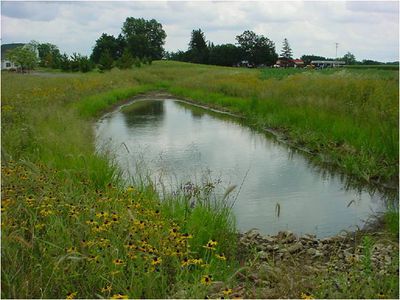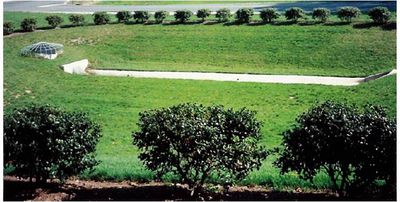
Difference between revisions of "Stormwater ponds"
m |
m |
||
| Line 8: | Line 8: | ||
<div class="center" style="width:auto; margin-left:auto; margin-right:auto;"><font size=3><u>'''Stormwater ponds articles'''</u></font size> | <div class="center" style="width:auto; margin-left:auto; margin-right:auto;"><font size=3><u>'''Stormwater ponds articles'''</u></font size> | ||
| − | <div | + | <div>[[Overview for stormwater ponds]]</div> |
| − | <div | + | <div>[[Types of stormwater ponds]]</div> |
| − | <div | + | <div>[[Design criteria for stormwater ponds]]</div> |
| − | <div | + | <div>[[Construction specifications for stormwater ponds]]</div> |
| − | <div | + | <!--<div>[[Construction observations for stormwater ponds]]</div> |
| − | <div | + | <div>[[Assessing the performance of stormwater ponds]]</div>--> |
| − | <div | + | <div>[[Operation and maintenance of stormwater ponds]]</div> |
| − | <div | + | <div>[[Calculating credits for stormwater ponds]]</div> |
| − | <div | + | <div>[[Cost-benefit considerations for stormwater ponds]]</div> |
| − | <div | + | <!--<div>[[Additional considerations for stormwater ponds]]</div>--> |
| − | <div | + | <div>[[Links for stormwater ponds]]</div> |
| − | <div | + | <div>[[References for stormwater ponds]]</div> |
| − | <div | + | <div>[[Supporting material for stormwater ponds]]</div> |
<br> | <br> | ||
| Line 46: | Line 46: | ||
==Overview== | ==Overview== | ||
| − | This section provides an overview of stormwater ponds. | + | This section provides an overview of stormwater ponds. It includes a discussion of permit applicability, function within the treatment train, cold climate and retrofit suitability, and role in water quality and quantity treatment. |
===Function within stormwater treatment train=== | ===Function within stormwater treatment train=== | ||
| Line 112: | Line 112: | ||
<p>The longer the runoff remains in the pond, the more settling (and associated pollutant removal) and other treatment can occur, and after the particulates reach the bottom of the pond, the permanent pool protects them from resuspension when additional runoff enters the basin. For these reasons, because they lack the crucial permanent pool, dry extended detention ponds are not considered an acceptable option for meeting water quality treatment goals; however, they may be appropriate to meet water quantity criteria (Vcp, Vp10, Vp100; see [[Uniform sizing criteria]]). It should again be noted that the only type of pond complying with the MPCA CGP is the wet extended detention pond (or wet sedimentation basin) constructed according to the minimum standards outlined in the permit.</p> | <p>The longer the runoff remains in the pond, the more settling (and associated pollutant removal) and other treatment can occur, and after the particulates reach the bottom of the pond, the permanent pool protects them from resuspension when additional runoff enters the basin. For these reasons, because they lack the crucial permanent pool, dry extended detention ponds are not considered an acceptable option for meeting water quality treatment goals; however, they may be appropriate to meet water quantity criteria (Vcp, Vp10, Vp100; see [[Uniform sizing criteria]]). It should again be noted that the only type of pond complying with the MPCA CGP is the wet extended detention pond (or wet sedimentation basin) constructed according to the minimum standards outlined in the permit.</p> | ||
<p>The long detention or retention time associated with stormwater ponds can be problematic in coldwater fisheries due to the potential increase in water temperature. In these situations, detention times should be limited to a maximum of 12 hours or other treatment alternatives (e.g., infiltration) should be explored.</p> | <p>The long detention or retention time associated with stormwater ponds can be problematic in coldwater fisheries due to the potential increase in water temperature. In these situations, detention times should be limited to a maximum of 12 hours or other treatment alternatives (e.g., infiltration) should be explored.</p> | ||
| − | <p>Removal efficiencies for key pollutants for wet extended detention ponds are provided in Table 12.8.2. | + | <p>Removal efficiencies for key pollutants for wet extended detention ponds are provided in Table 12.8.2. Typical effluent concentrations for selected water quality parameters are provided in Table 12.8.3.</p> |
<br> | <br> | ||
| Line 199: | Line 199: | ||
==Design== | ==Design== | ||
| − | This section describes information on design of stormwater ponds. | + | This section describes information on design of stormwater ponds. CADD drawings can be found [[Ponds and wetlands|at this link]] |
===Physical feasibility initial check=== | ===Physical feasibility initial check=== | ||
| Line 507: | Line 507: | ||
:'''Step 8:''' Size and design outlet structures | :'''Step 8:''' Size and design outlet structures | ||
| − | The following outlet stages should be included in the pond design. It is possible to design one device to meet all stages. Equations included in this step are based on certain assumptions about which types of outlet structures will be used to control the various stages. If the designer chooses to use different structure types, the specific equations used to determine stage-discharge relationships will change, but the general approach will remain the same. | + | The following outlet stages should be included in the pond design. It is possible to design one device to meet all stages. Equations included in this step are based on certain assumptions about which types of outlet structures will be used to control the various stages. If the designer chooses to use different structure types, the specific equations used to determine stage-discharge relationships will change, but the general approach will remain the same. For this discussion, an emergency drain is a drawdown pipe sized to drain the pond within 24 hours to allow access for riser repairs and sediment removal, or to lower the permanent pool in late fall (to provide additional storage during frozen conditions), while a water quality (low flow) outlet is an outlet (typically an orifice) designed to release Vwq with an average detention time of 12 hours. After designing the orifice, a check should be made to verify that the release rate is no greater than 5.66 cfs/acre of pond surface area. (Calculation steps adapted from Vermont Stormwater Management Manual.) |
<p>The average release rate for Vwq is computed as: | <p>The average release rate for Vwq is computed as: | ||
| Line 514: | Line 514: | ||
<br> | <br> | ||
| − | From the stage-storage table, find the elevation associated with V<sub>wq</sub>. | + | From the stage-storage table, find the elevation associated with V<sub>wq</sub>. Calculate the approximate average head on the water quality outlet as: |
<br> | <br> | ||
| Line 594: | Line 594: | ||
Maintenance access to the pond, forebay, and inlet and outlet structures is '''Required'''. The access routes should be designed with a minimum 10’ width and maximum 15% slope. | Maintenance access to the pond, forebay, and inlet and outlet structures is '''Required'''. The access routes should be designed with a minimum 10’ width and maximum 15% slope. | ||
<p>Safety features such as obstructive planting that make access difficult, signs warning against fishing and swimming, fencing, and grates over outlet structures should be included as appropriate. Aesthetic enhancements such as trails or benches can also be included.</p> | <p>Safety features such as obstructive planting that make access difficult, signs warning against fishing and swimming, fencing, and grates over outlet structures should be included as appropriate. Aesthetic enhancements such as trails or benches can also be included.</p> | ||
| − | <p>If an outlet structure is greater than five feet deep, it is '''Required''' that OSHA health and safety guidelines be followed for safe construction and access practices. Additional information on safety for construction sites is available from [http://www.osha.gov/pls/oshaweb/owadisp.show_document?p_table=STANDARDS&p_id=10930 OSHA]. | + | <p>If an outlet structure is greater than five feet deep, it is '''Required''' that OSHA health and safety guidelines be followed for safe construction and access practices. Additional information on safety for construction sites is available from [http://www.osha.gov/pls/oshaweb/owadisp.show_document?p_table=STANDARDS&p_id=10930 OSHA]. OSHA has prepared a flow chart which will help site owners and operators determine if the site safety plan must address confined space procedures.</p> |
:'''Step 13:''' Check expected pond performance against regulatory requirements. | :'''Step 13:''' Check expected pond performance against regulatory requirements. | ||
Revision as of 21:54, 4 March 2013
Generally speaking, the term “stormwater pond” may refer to any constructed basin that is built for the purpose of capturing and storing stormwater runoff, either temporarily or for an extended period of time, in order to prevent or mitigate downstream water quantity or quality impacts. Several distinct structure types (wet ponds, dry ponds, etc.) are included in this general category, and they are discussed in more detail below.
The sections in this chapter may be viewed as a single page.
Stormwater ponds articles
A one page fact sheet for stormwater ponds provides overview information, a short summary of design, construction and maintenance considerations, and information on stormwater volume and pollutant removal.

